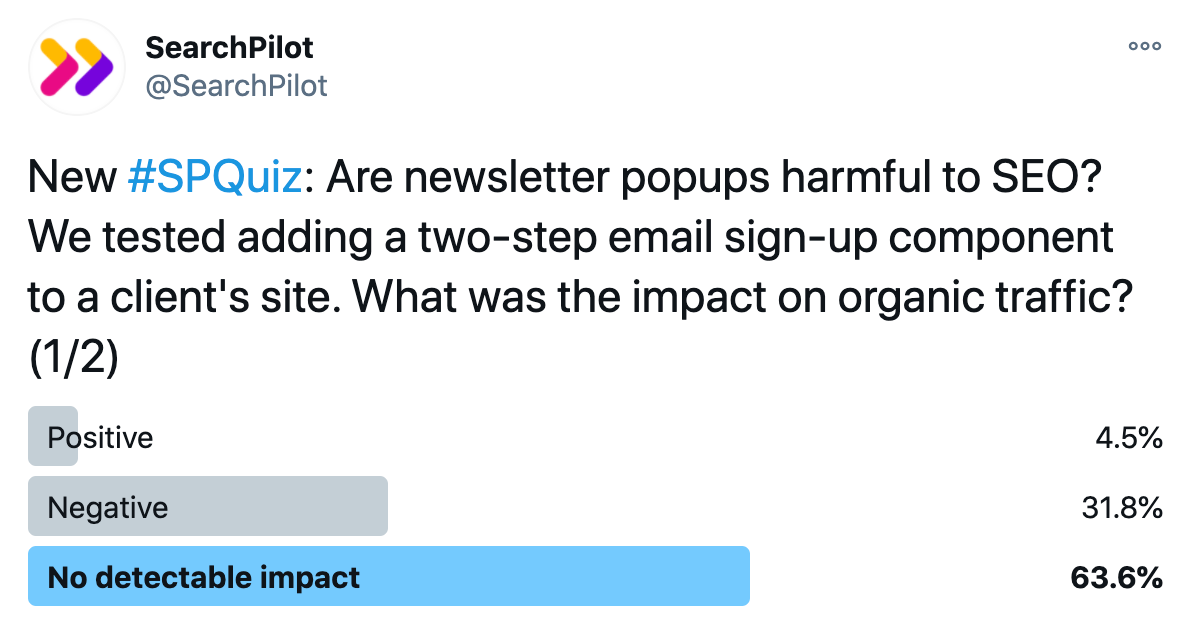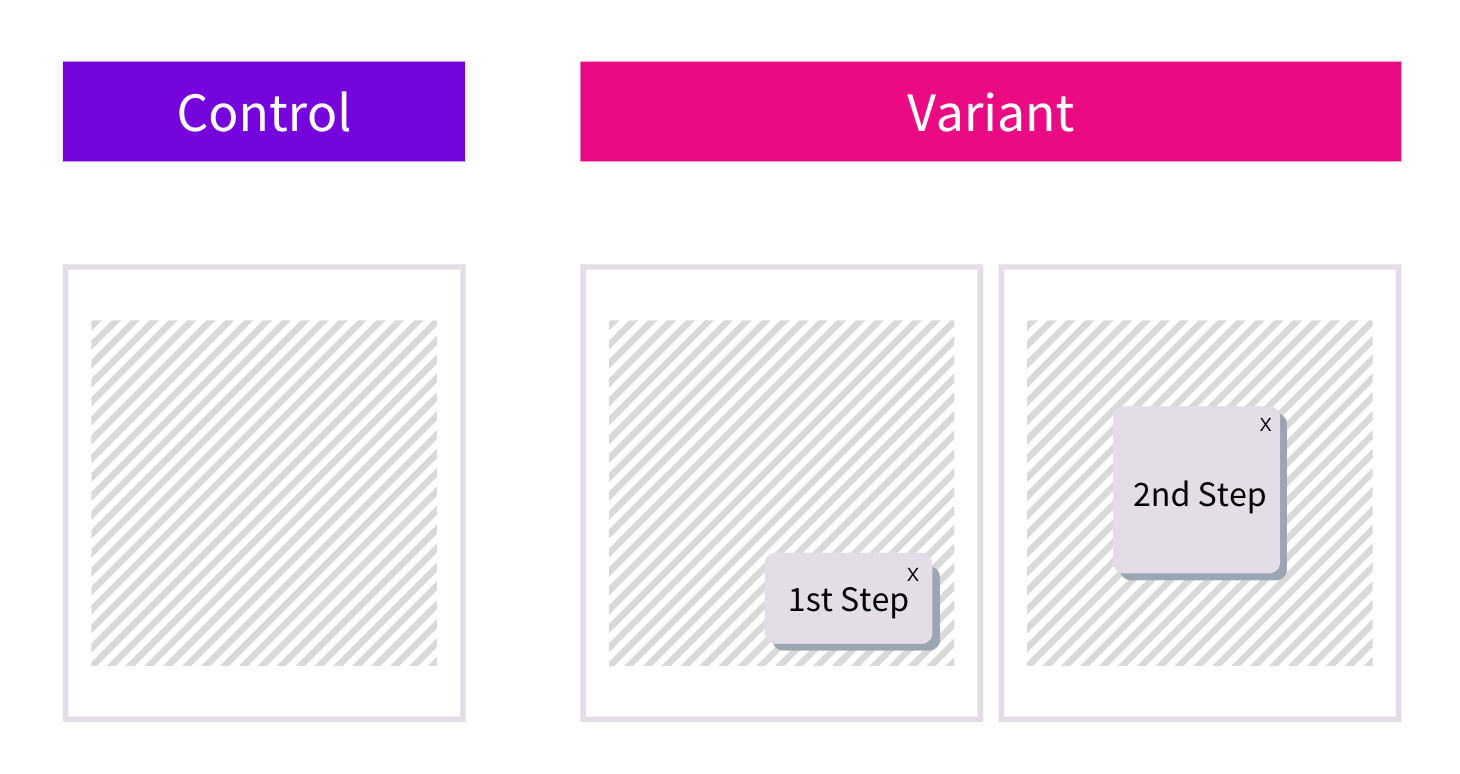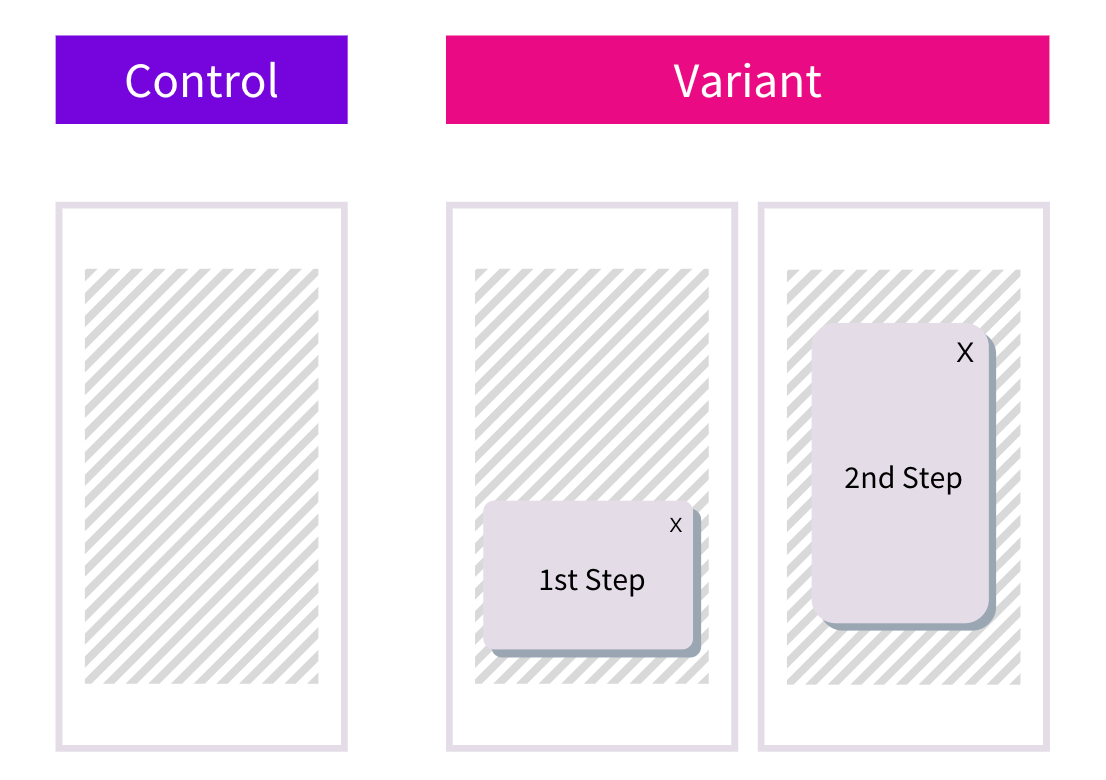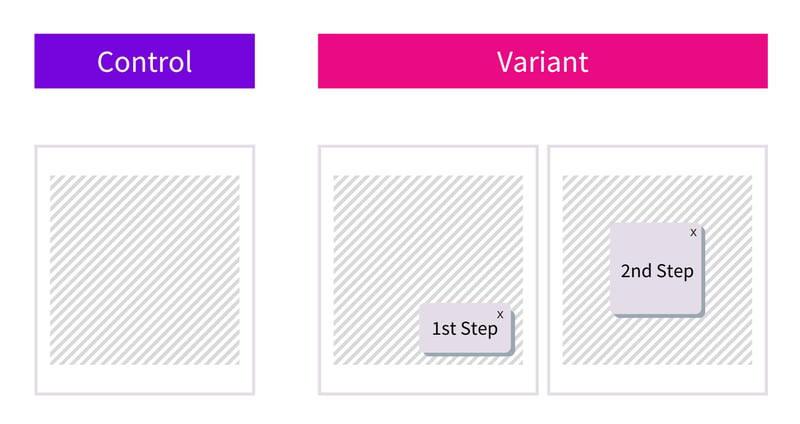Start here: how our SEO split tests work
If you aren't familiar with the fundamentals of how we run controlled SEO experiments that form the basis of all our case studies, then you might find it useful to start by reading the explanation at the end of this article before digesting the details of the case study below. If you'd like to get a new case study by email every two weeks, just enter your email address here.
Earlier this week we asked our Twitter followers what they think happened to organic traffic when we added a 2-step email signup component to pages.

Almost 64% of those who answered thought this change would have no detectable impact on organic traffic while almost 32% thought this would result in a negative impact to SEO.
Well, majority of the guesses were incorrect. In fact, this particular test resulted in a negative impact to SEO (and conversion rates). Read on to learn more!
The Case Study
Email is a powerful marketing channel, but there can be trade-offs between different approaches toward capturing users’ email addresses and permissions. In our latest case study, we explore how one approach to email capturing impacted SEO.
We tested adding a signup component that involved two steps: it appeared at the bottom of the page, encouraging users to sign up for email updates. Once clicked, it expanded to a larger component and centered itself in the middle of the page so that users could input their email address. Our goal was to begin capturing email addresses on these pages without obscuring the whole page with an immediate overlay.
We tested this change full funnel and hoped that by only showing the larger email capture pop-up to those users that had already indicated they were happy to submit their email, we would avoid negative impacts on users who didn’t want to subscribe. Below are examples of how the 2-step component appeared on both desktop and mobile devices.
Desktop:

Mobile:

This was the impact on organic search traffic:

It turned out that this change was negative, resulting in a 4% loss in organic traffic.
We ran this experiment as a full funnel test, meaning that we simultaneously measured the impact on some key conversion metrics, not including email signups. The impact here was also negative across all devices, including an increase in bounce rate.
To explain what may have happened in this test, here’s some helpful context. In 2017, Google announced that it would be cracking down against intrusive interstitials - interactive components covering up a host site’s interface. However, not all overlays are considered intrusive depending on their purpose, such as age verification or cookie usage notifications. Google would be particularly looking out for intrusive interstitials on mobile pages to ensure users are able to more easily access content.
Google mentioned that it would not consider interstitials to be intrusive if they took up a reasonable amount of space. Upon landing on the mobile page, the first step of the email component appeared at the bottom of the screen, usually not taking up more than half of the page. However, even though the first component did not cover the whole screen, it still had a negative impact on search. In this test, it seems Google may have evaluated the mobile pop-up to be an intrusive interstitial since it appeared as soon as the user navigated to the page from the mobile SERP, and blocked partial access to a key component on the page.
Additionally, with this pop-up, users could have been deterred from further engaging with the page, often bouncing from it. Increased bounces could have signaled to Google that the site has a poor quality user experience, likely having led to lower rankings and a decrease in organic traffic.
In this case, the resulting impact that the 2-step email component had on organic traffic and core conversion rates outweighed the amount of email signups it was able to generate. Whether or not you were surprised by these results, this test serves as a helpful reminder to always thoroughly consider how one marketing effort may impact another.
To receive more insights from our testing sign up to our case study mailing list, and please reach out if you want to learn more about our A/B testing platform or to request a demo.
How our SEO split tests work
The most important thing to know is that our case studies are based on controlled experiments with control and variant pages:
- By detecting changes in performance of the variant pages compared to the control, we know that the measured effect was not caused by seasonality, sitewide changes, Google algorithm updates, competitor changes, or any other external impact.
- The statistical analysis compares the actual outcome to a forecast, and comes with a confidence interval so we know how certain we are the effect is real.
- We measure the impact on organic traffic in order to capture changes to rankings and/or changes to clickthrough rate (more here).
Read more about how SEO A/B testing works or get a demo of the SearchPilot platform.
